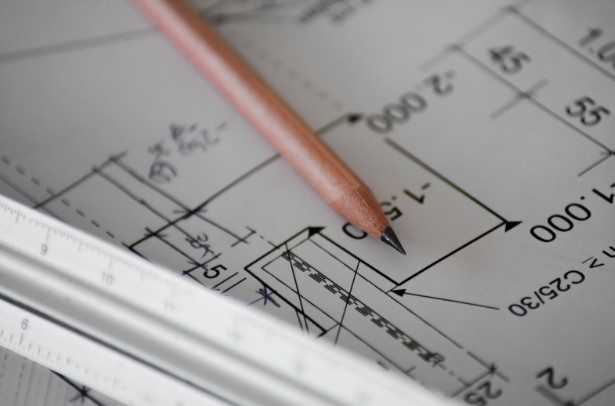Embarking on a journey through the evolution of mathematical thought in education is akin to exploring a vast and intricate landscape, where each turn reveals new insights into how we understand and teach this fundamental subject. The story of mathematics is not just a chronicle of numbers and equations but a rich tapestry woven from the contributions of diverse cultures, heated debates, and groundbreaking ideas. By delving into this history, we gain a deeper appreciation for the modern educational approaches that shape our world today. This exploration promises to be a fascinating one, shedding light on the controversies, the integration of non-Western contributions, and the evolution that has led us to the present day.
The Cradle of Mathematics Ancient Civilizations
Long before the advent of modern classrooms, ancient civilizations were laying the groundwork for mathematical thought. In the fertile crescents of Mesopotamia, the pyramids of Egypt, the scholarly halls of India, and the dynasties of China, early mathematicians were solving practical problems that ranged from agriculture to architecture. Figures like Euclid, with his geometric principles, and Aryabhata, with his astronomical insights, were not just solving equations but were unlocking the mysteries of the universe. Through visual timelines, we can trace these contributions, appreciating the foundation they laid for future generations.
The dialogue between these ancient cultures and their mathematical pursuits reveals a fascinating aspect of human curiosity. It wasn’t merely about survival; it was a quest to understand the world in a more profound way. This era of discovery set the stage for centuries of innovation, proving that the roots of mathematical thought are deep and widespread.
Mathematics During the Middle Ages and the Renaissance A European and Islamic Perspective
While Europe seemed to slumber through the Middle Ages, the flame of mathematical thought was kept alive and vibrant in the Islamic world. Scholars like Al-Khwarizmi introduced concepts that would shape the future of mathematics, including the very algorithms that power today’s digital age. This period was not just about the preservation of knowledge but its expansion and refinement.
The Renaissance brought a revival of mathematical studies in Europe, fueled by the rediscovery of ancient texts and the exchange of ideas across cultures. Figures like Fibonacci, with his famous sequence, bridged the gap between the mathematical heritage of the East and the burgeoning scientific spirit of the West. This era of cross-cultural exchange highlights the interconnectedness of human knowledge and the universal language of mathematics.
The Enlightenment The Dawn of Modern Mathematics
The 17th and 18th centuries marked the dawn of modern mathematics, with the development of calculus by giants like Isaac Newton and Gottfried Wilhelm Leibniz. This period was characterized by an explosion of mathematical activity, driven by the desire to understand the natural world in precise, mathematical terms. The calculus priority dispute, a controversy over who first invented calculus, illustrates the passionate nature of mathematical progress and the personal stakes involved in the quest for knowledge.
This era was not just about the breakthroughs but also about the debates and discussions that propelled the field forward. The Enlightenment set the stage for a more formalized approach to mathematics, laying the groundwork for the incredible advancements that were to come.

Formalizing Mathematics in the 19th Century
The 19th century saw efforts to place mathematics on a more rigorous footing. Mathematicians like Carl Friedrich Gauss and Bernhard Riemann were at the forefront of formalizing concepts in algebra, geometry, and analysis. This period was marked by intense debates over the nature of mathematical proofs and the foundations of mathematics itself.
The quest for rigor was not just an academic exercise but a reflection of the changing world. As science and technology advanced, the need for precise mathematical language and proofs became ever more critical. This era of formalization was a pivotal moment in the evolution of mathematical thought, setting the stage for the abstract developments of the 20th century.
The 20th Century A New Mathematical Landscape
The 20th century witnessed a dramatic shift towards abstraction in mathematics, with the development of fields like set theory, topology, and abstract algebra. Figures such as David Hilbert and Emmy Noether played key roles in expanding the horizons of mathematical research and education. This era was not just about new theories but about a new way of thinking about mathematics itself.
The introduction of abstract concepts required innovative approaches to teaching and learning. Diagrams and visual aids became essential tools for illustrating ideas that were not easily grasped through traditional methods. This period of abstraction challenged educators and students alike to rethink the nature of mathematical understanding.
Evolving Pedagogies Mathematics Education in the 20th Century
The evolution of mathematics education throughout the 20th century reflects broader shifts in educational philosophies and practices. The New Math movement, for example, sought to introduce abstract mathematical concepts into the classroom, sparking debate and discussion about the best ways to teach mathematics. This era saw a growing recognition of the importance of pedagogical approaches that could adapt to the changing landscape of mathematical thought.
The impact of technology in the classroom further transformed mathematics education, offering new tools for exploration and understanding. From calculators to computer software, technological advancements provided both challenges and opportunities for educators and students. This period of pedagogical evolution underscored the dynamic nature of mathematics education, continually adapting to meet the needs of a changing world.
Modern Education and Historical Perspectives The Role of IB Maths
In the context of contemporary education, programs like IB Maths exemplify the integration of historical perspectives into the curriculum. By drawing on the rich history of mathematical thought, IB Maths enriches students’ understanding and appreciation of the subject. This approach not only provides a deeper context for learning but also highlights the evolution of mathematical ideas over time.
The inclusion of historical perspectives in IB Maths serves as a reminder of the diverse contributions to the field and the importance of understanding mathematics within a broader cultural and historical context. This approach reflects a commitment to a well-rounded education, one that values the past as a key to understanding the present and shaping the future.
The Global Classroom Diverse Perspectives in Mathematics Education
The inclusion of diverse perspectives in mathematics education is crucial for fostering a more inclusive and comprehensive understanding of the subject. By integrating non-Western mathematical contributions into modern curricula, educators can offer students a more global perspective on mathematics. This approach not only enriches the learning experience but also challenges the traditional Eurocentric narrative of mathematical history.
The value of a global perspective in mathematics education cannot be overstated. It opens up new avenues for exploration and understanding, encouraging students to appreciate the universal nature of mathematical thought. This commitment to diversity and inclusion is essential for preparing students to navigate a world that is increasingly interconnected and complex.
Looking Ahead The Future of Mathematics Education
As we look to the future, the landscape of mathematics education continues to evolve, shaped by the challenges and opportunities presented by digital learning tools and the push for more inclusive curricula. The potential for innovation in teaching and learning is vast, offering exciting possibilities for engaging students in the beauty and complexity of mathematics.
The ongoing evolution of pedagogical approaches reflects a broader commitment to adapting education to meet the needs of a changing world. By embracing new technologies, incorporating diverse perspectives, and fostering a culture of curiosity and exploration, we can ensure that the future of mathematics education is as dynamic and vibrant as the subject itself.
In retracing the evolution of mathematical thought in education, we’ve journeyed from the ancient civilizations that laid the groundwork for modern mathematics to the contemporary classrooms that continue to shape the future of the field. This exploration underscores the importance of historical context, diverse perspectives, and pedagogical evolution in enriching our understanding of mathematics. Programs like IB Maths serve as a testament to the enduring value of integrating these elements into mathematics education, offering students a richer, more comprehensive view of the subject. As we look forward, the lessons of the past remind us of the potential for innovation and growth, ensuring that the story of mathematics continues to unfold in exciting and unexpected ways.

